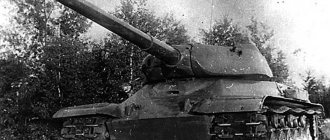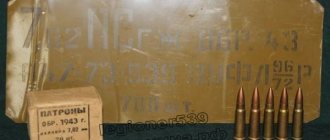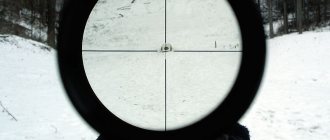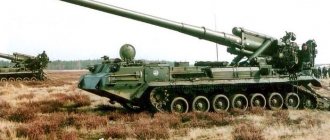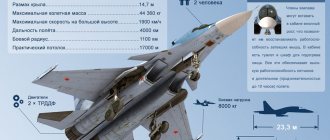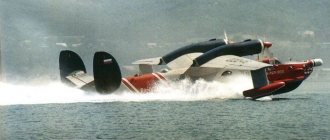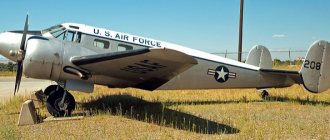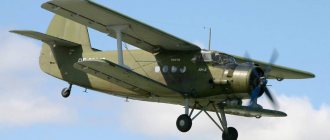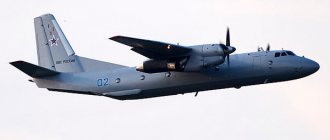The Krasnoyarsk branch of the Russian Geographical Society announced on January 14 the start of an action to search for relatives of passengers on the Douglas 47-C plane that crashed on Taimyr in 1947. While dismantling parts of the vehicle, experts discovered inscriptions in chemical pencil on the fuselage - 23 names: Pertsevko, Kapanadze, Potylitsyna, Vinokurov... Previously, only the commander and crew members knew by name - who escaped and who could no longer be found. Now, thanks to relatives, members of the Douglas expedition. Return” hope to restore the full picture of the tragedy. Read about how the Tyurikov Board survived and what is happening to the legendary aircraft now in the Izvestia article.
Frozen pipe
What could have destroyed the An-148 in the Moscow region
Russian Aviation
Photo © Krasnoyarsk regional branch of the Russian Geographical Society
On April 22, 1947 at 00:30 from the Kozhevnikov Bay airfield via Dudinka to Krasnoyarsk, on a return flight, a C-47 Douglas passenger plane took off, carrying 26 passengers, including three children and 6 women and 852 kg of luggage .
Half an hour after takeoff, the left engine failed, and after another 4 hours of flight, the second one failed due to overheating. At 5:30, the aircraft commander, Maxim Tyurikov, made a forced emergency landing on a swamp in the tundra, 180 km from the village of Volochanka. During landing, the left engine was torn off and the front fairing was severely damaged, but none of the passengers or crew members were injured.
Photo (c) Russian Geographical Society
Historical reference:
On April 16, 1943, the crew of the S-47 (serial number - 42-32892, serial number - 9118) was temporarily seconded to the Polar Aviation Directorate of the Main Directorate of the Northern Sea Route (UPA GUSMP) for ice reconnaissance, consisting of: ship commander Captain Seraphim Antyushev , pilot captain Nikolai Syrokvasha, air gunner-radio operator military technician 2nd rank Alexander Abramchuk, aviation onboard technician military engineer 3rd rank Veniamin Barukin and aviation onboard technician Mikhail Pyatin.
The Douglas and its crew had plenty of work to do. He received his badge of belonging to polar aviation, was engaged in ice exploration in the Kara Sea, and was part of the Chukotka air group of polar aviation. Since 1946, the aircraft was transferred from Polar Aviation to the Civil Air Fleet and, having received the designation “USSR L-1204”, was part of the 26th transport aviation detachment of the Krasnoyarsk Directorate of the Civil Air Fleet.
Four days later, Tyurikov, along with the flight mechanic, flight radio operator and six passengers, left to go to a settlement or nomad camp, and disappeared.
Over the 70 years that the plane lay in the tundra, the inscriptions left by the commander and passengers were well preserved on its inner lining. From these records some details of the flight became known. One of the last entries is dated May 1: “We are sitting alone. Everything is running out. No one loses heart. We are all waiting for salvation. The holiday was celebrated cheerfully,” one of the passengers wrote on the trim.
Inscriptions on the interior lining / Photo (c) LifeNews
The writing on the walls of the plane was made with a chemical pencil. Moreover, there is no doubt that they are all genuine.
After another ten days - on May 11, 1947 - the plane with the starving people was found. The remaining passengers with co-pilot Sergei Lukyanovich Anoshko were discovered and taken out by pilot Shatrov on Li-2 aircraft No. N-426. 17 people were rescued, but the Douglas remained for many years lying in the tundra above the Arctic Circle.
The remains of the ship's commander, Maxim Dmitrievich Tyurikov, were discovered only on October 23, 1953, by a hunter of the Kalinin collective farm in the Avamsky district, Filipp Nikolaevich Sakhatin, at the sources of the Shaitan River, approximately 120 km southwest of the place of the emergency landing of the plane. The corpse was identified by documents found at the discovery site (party card, pilot's certificate, notebook). The remaining two crew members and six passengers are considered missing.
On August 2, 2016, the patriotic action “Douglas is Waiting” began to evacuate almost an entire plane to Krasnoyarsk, organized by the Expedition Center of the Russian Geographical Society in the Siberian Federal District.
An employee of the museum of the Military Engineering Institute of Siberian Federal University, reserve lieutenant colonel Vyacheslav Filippov spoke about the history of the Douglas evacuation project:
— I learned about the fate of this plane back in 2011. It immediately became clear that such a unique object had to be removed - it was a pity that almost an entire wartime Lend-Lease aircraft was lost in the tundra. My colleagues and I never ceased to explain and prove the uniqueness of this aircraft, which was directly related to the flight along the Krasnoyarsk air route during the war, worked in Krasnoyarsk in polar and civil aviation and has a specific and very tragic history.
For a long time, no one except Vyacheslav Filippov himself and his few like-minded people was interested in the idea of evacuating the Douglas. It was proposed to buy a flying plane in the USA - it was easier and cheaper. “Only thanks to the director of the Military Engineering Institute of Siberian Federal University, Evgeniy Nikolaevich Garin, who found understanding with the leadership of the Russian Geographical Society, and the financial assistance of caring people, was it possible to successfully carry out this unprecedented operation,” says Vyacheslav Filippov.
Among the members of the expedition is Avelina Maksimovna Antsiferova, the daughter of the legendary pilot Maxim Tyurikov. In 1947, she was only six years old when she learned about the death of her father in the North.
“I was so inspired when I found out that the plane would be evacuated from the tundra. Moreover, I will see everything with my own eyes, feel it, touch it with my hands. For me, this is the main event in my life,” says Avelina Maksimovna.
The C-47 Douglas aircraft was produced in the United States during World War II. Due to the impossibility of evacuation at the time, it was written off and abandoned at the accident site. The C-47 DL aircraft (serial number 42-32892, serial number 9118) was transferred from the manufacturer to the US Air Force on February 24, 1943, and on March 12 in Fairbanks, Alaska, the aircraft was transferred to the USSR Air Force.
For evacuation, the plane had to be disassembled into large parts. To avoid any difficulties during disassembly, American specialist Glen Moss was invited for reliability, because Even the keys that need to be used to unscrew the nuts and bolts are specific; they were made in America and sent to Russia especially for this expedition. Glen Moss has already taken part in similar events, in particular, in AlSib-2015 - a flight along the historical route Alaska-Siberia on two Douglas C-47 aircraft and delivering them to Moscow for MAKS 2015.
“Douglas” is a part of my life. My father is a pilot, I myself have been piloting since I was 19, I know the structure of an airplane very well. As soon as I found out that an expedition was going on, I immediately decided to participate. I can be helpful in disassembly. The main problem is to separate the parts from each other, says Glen Moss.
The expedition to evacuate the Douglas aircraft from Taimyr can be considered unique. The aircraft was well preserved and disassembly took only one week. Parts of the aircraft on the Mi-8T external sling were delivered for loading onto a barge. The distance from the S-47 emergency landing site to the Pyasino River was 78 km, the Mi-8T performed 5 flights. After loading the disassembled aircraft, the barge went up the Yenisei to Dudinka and further to Krasnoyarsk.
In addition, rescuers literally dug up the entire crash area and found many interesting things related to the accident. Expedition participant, senior lecturer at the Institute of Mining, Geology and Geotechnology Alexander Matveev noted that some rarities were preserved in good condition.
Aircraft crew: 1. Flight mechanic Pismarev Viktor Ananyevich. 2. Flight operator Smirnov Alexey Dmitrievich. 3. Co-pilot Anoshko Sergey Lukyanovich 4. Crew commander Maxim Dmitrievich Tyurikov. Photo (c) Russian Geographical Society
— Excellent American radio stations, radio compasses. Of course, they are damaged, but it is quite possible that they can be restored. And surprisingly, everything was complete - the plane was destroyed, but not looted. Some things there are absolutely amazing, I only saw them once in historical photographs - stoves for heating engines in winter conditions based on huge gasoline stoves,” says Alexander Matveev.
The C-47 Douglas is an American military transport aircraft, better known as the Dakota. During World War II, the United States supplied them to the Soviet Union under the Lend-Lease agreement. The planes flew along the legendary Alaska-Siberia air route. Some of them were left after the war to work in polar aviation in the north of the Krasnoyarsk Territory.
The operation to deliver the Douglas to Krasnoyarsk is planned to be completed on September 17. The restored C-47 Douglas will become one of the main exhibits of the Museum of the Development of the Russian North, which is planned to be created in Krasnoyarsk soon. There is not a single example of this type of aircraft in Russian museums. But the point is not only in the plane itself. First of all, it is memory. Monument to Krasnoyarsk pilots and ALSIB itself.
Based on materials:
- Russian Geographical Society (https://ec-rgo-sfo.com/ekspeditsii/895-duglas-zhdet-pomoshchi)
- LifeNews (https://life.ru/t/news/896031/na_obshivkie_upavshiegho_70_liet_nazad_na_taimyrie_samoliota_nashli_zapiski_ekipazha)
- NIA-Krasnoyarsk (https://www.24rus.ru/more.php?UID=136231)
- Federal Press, Krasnoyarsk (https://fedpress.ru/news/24/society/1665351)
- Sibnovosti.ru, Krasnoyarsk (https://krsk.sibnovosti.ru/society/334091-ekspeditsiya-dostavit-v-krasnoyarsk-samolet-razbivshiysya-v-1947-godu-na-taymyre)
- 02/04/2016 Year 1976. Betrayal of pilot Belenko
- 04/26/2016 “Rook” versus “Warthog” - what’s the difference?
- 03/30/2016 25 most outstanding aircraft in the history of domestic aviation
- 01/18/2018 The patriotic competition “Russian Aviation” has started
( 5 ratings, average: 5.00 out of 5)
DouglasS-47
335482.jpeg
Photo: Mikhail Zholobov
On May 31, 2022, Mikhail and his nephew Denis Zholobov went in search of a car that had crashed in the mountains. The first 90 km of the route are by car on roads still untrodden after winter, then on foot.
Along the way, the searchers encountered traces of wild animals - deer, roe deer, bears. They tried to walk “loudly” - with whistling and shouting to scare away the animals. As a last resort, take with you airsoft stun grenades, which work quickly and very effectively.
On the third day of the journey we reached Mount Zelenaya. On its saddle lies another plane - a Douglas A-20, which crashed on September 3, 1946. Five people died in that disaster. Here search engines placed a sign in 2022. This time it was changed to a higher quality and more durable one.
On the fourth day we reached the Tydyn ridge - a giant scattering of stones 20 km long with steep climbs and sparse dry forest. Moving here is very difficult - one wrong move and the hike is over. Having called home the day before, the searchers learned that the weather would turn bad tomorrow. I had to hurry as best I could. We managed to get to the crash site in the evening. They began searching for the wreckage immediately.
“The places there were wild even in Soviet times. And now even more so. A village 20 km away used to exist. He disappeared in the 50s and 60s,” said Zholobov.
The search engines did not have exact coordinates. Based on various indicators, the fall zone of 150-100-50 meters was calculated in advance. Finally, in a gap in the forest, piles of twisted metal appeared. Five years of work, nerves, and disappointments are behind us. Sometimes it seemed that it would be impossible to find the plane, but here it was - the site of the disaster. They decided to examine it the next day.
Power point
Since there was nothing more suitable, the engines for the aircraft were installed on the TRDDF D-30F11 model. By the way, they were used on MiG-31 interceptors. Their traction was clearly not enough for such a machine, but it was assumed that in the future it would be possible to develop a more high-torque and economical model. However, even with a take-off weight of 25.5 tons, the performance of these engines was more than acceptable. At high altitudes, the flight speed reached 2.2 thousand km/h; near the ground this figure was 1.5 thousand km/h. The maximum range is 3.3 thousand kilometers, the “ceiling” in height is 18 kilometers.
Basic information about the program
The fact is that the plane attracted everyone's attention due to the forward sweep of the wing. The excitement was such that even modern discussions of the PAK FA project do not live up to those events. All experts predicted an impressive future for the new development and wondered when the Su-47 Berkut would appear in the army. Why did they close the project if everything was so wonderful? Today we will talk about this, as well as about the milestones in the development of this aircraft.
335447.jpeg
Photo: Mikhail Zholobov
“The morning is foggy and cloudy. We arrived here on time. It is almost impossible to walk on those stones in fog and rain. Let's go to the scene of the disaster. A terrible sight. The plane is a transport plane, quite large. Scattered over the rocks on the mountainside for 250 meters, 80 meters wide. Piles of twisted metal, somewhere there are traces of a fire. The plane began to collapse while still in flight and caught the tops of trees. Below is a wing with a red star. The paint, the bottom lining, and chassis parts have been preserved. At the top of the disaster is the hull itself. The engine was thrown under the bottom, the propellers lie separately to the side. Everywhere there are small parts of the casing, instruments. Iron, iron, iron. Scary. 22 people died here. We find an old axe. Traces are visible on the body - bodies were cut out of twisted metal. We find boots. A terrible sight. How could one passenger survive here? On the verge of fantasy,” recalls Zholobov.
In a couple of hours, search engines carried out filming. They tried to find the burial, but it was not possible to do so - for more than 75 years, nature hid all traces. A sign with the names of the victims was placed on the tail of the plane.
“Having said goodbye, we leave for the camp. We did our job. Officially, we are the first to find the plane and film it completely,” Mikhail Zholobov emphasized.
Getting home was not an easy task. The weather deteriorated sharply and it began to snow. We had to spend almost a day on the mountainside in a tent. The next day we began our descent following our own footsteps and met a pair of hefty wolves. However, the animals gave way to people and went about their business.
On the way back, Mikhail and Denis Zholobovs found an abandoned geologists’ camp, where exploration of a uranium deposit was carried out in the 50s, scared away three bears who stood in the way of the searchers, and also discovered the wreckage of a Robinson R44 helicopter in a snow circus. According to rumors, about five years ago he suffered an accident in these places.
Why was the project closed?
It should be remembered that active testing of this prototype continued until the mid-2000s. The project was closed because it was originally planned to be experimental. All the materials that were accumulated during this work are truly priceless. It would be a global mistake to think that this was a fifth-generation fighter. The Su-47 Berkut is just a prototype, but an extremely important one. Thus, it is already known that its central bomb bay is almost similar to that of the newest PAK FA. Surely it was not by chance that it appeared on the last one... Only the military knows how many technical ideas from this aircraft will be used in the future. One can only be sure that there will be many of them.
335472.jpeg
Photo: Mikhail Zholobov
“I just landed unsuccessfully and couldn’t take off. We disassembled it slightly and took out what we could during the winter. We saw its remains. This is not the climate for American aircraft,” added Mikhail Zholobov.
During the eight days of the route, the searchers covered 110 km on foot. The goal was achieved: the crash site of the plane was discovered, a memorial plaque was installed, all documents on the disaster were collected, direct relatives of the two pilots who flew the Douglas were found. The work of several years is completely finished.
Alexander Zhirnov
Achievements of designers and engineers
The creation of a unique technology for manufacturing long parts from complex composite materials can be considered the most significant achievement of designers. In addition, it was possible to achieve truly jeweler-like precision in their joining. The longest parts of the Su-47 Berkut aircraft, the photo of which you see in this article, are eight meters long. Simply put, there are few parts, they are all connected to each other with the highest precision, and the number of bolted and riveted connections is sharply reduced. This had a very beneficial effect both on the rigidity of the structure and on the entire aerodynamics of the aircraft.
The weight of the design aircraft was close to 20 tons, with complex composites accounting for at least 14%. To simplify things as much as possible, they tried to take some of the parts from mass-produced cars. Thus, the canopy, landing gear, and a number of other structural elements were transferred without changes to the Su-47 Berkut aircraft directly from its failed “ancestor” - the SU-27.
Along the leading edge the wing slope is 20°, along the rear wall this value is 37°. A special influx was made in its root part, which made it possible to significantly reduce the drag coefficient. Almost all the edges of the wing are entirely occupied by mechanization. Its entire structure is solid composites, with only 10% of it being metal inserts added to achieve the required strength and rigidity.
Equipment and weapons
For obvious reasons, very little is known about the actual composition of on-board equipment. One can rightfully assume that part of it was transferred from the Su-27. The navigation system took advantage of real-time data from military satellites. It is known that the aircraft was equipped with an ejection seat model K-36DM, which was significantly different from standard production models. The fact is that its back is located at 30° to the horizontal.
This was done so that pilots could more easily endure the enormous overloads that arose during intensive maneuvering at maximum speeds. According to available data, other controls were directly taken from other domestic fighters, with the Su-27 most often used as a “donor”.
Since the aircraft was exclusively experimental, it did not carry weapons in principle (or information about it was classified). Nevertheless, on the left wing flap the place for an automatic cannon is clearly visible (there is evidence that it was installed on the experimental aircraft), and in the middle part of the hull there is a spacious compartment for bomb weapons. Scientists and military personnel unanimously claim that the project was solely aimed at testing the flight qualities of this type of aircraft, and therefore there were no unique weapons on board the Su-47 Berkut. Why was a project that had already shown itself to be quite promising closed?
Why did you choose the “wrong” wing?
So, why did the innovative Su-47 Berkut get a forward-swept wing? Compared to traditional designs, it had several significant advantages:
- Excellent aerodynamics, and even at low speeds this advantage is immediately visible.
- Excellent lifting force, superior to that of classically designed wings.
- Improved controllability during takeoff and landing.
- Significantly less chance of going into a tailspin.
- Excellent alignment - since the power elements of the wing are shifted towards the tail, a lot of space is freed up in the central compartment for the rational arrangement of ammunition.
